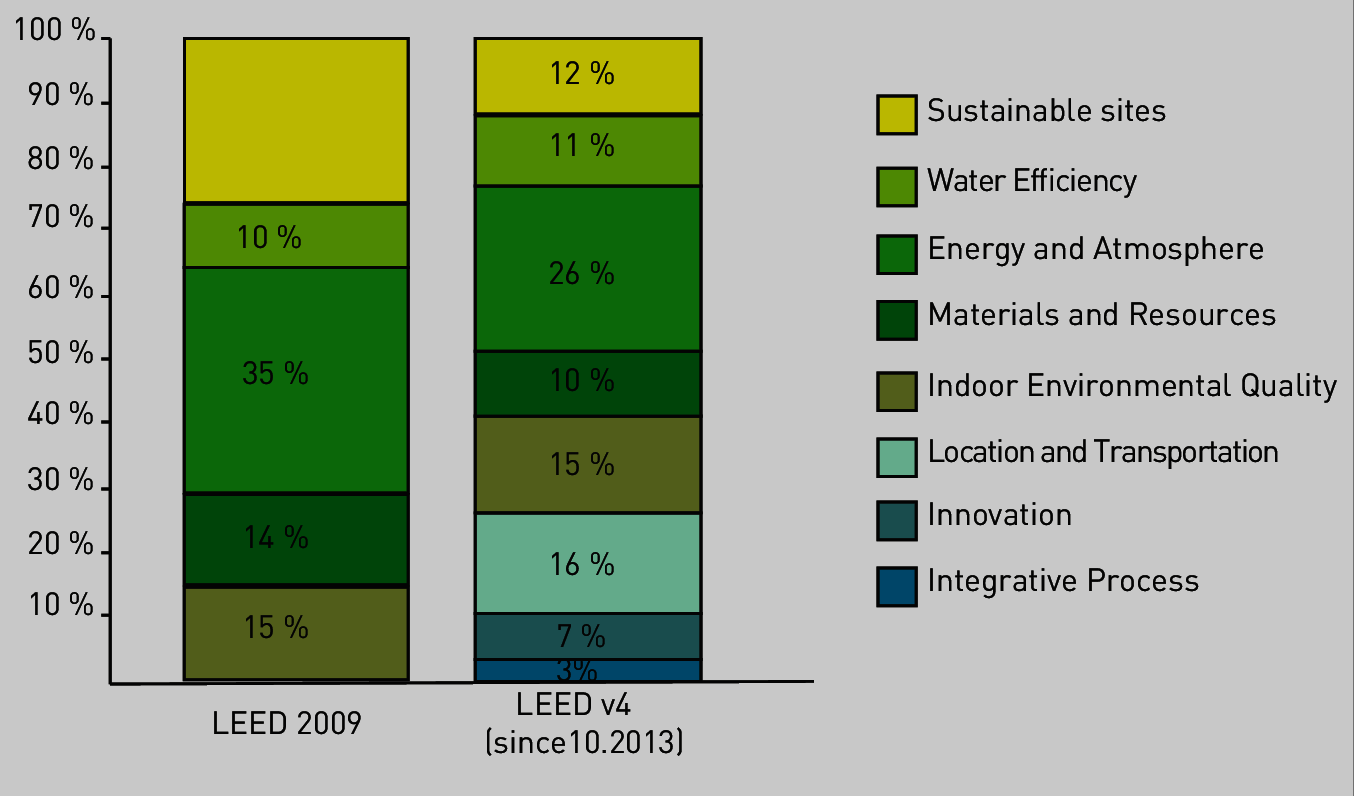
LEED, weighting of criteria
Postbox 1960
D-59753 Arnsberg

LEED, weighting of criteria
The LEED certification system introduced by the USGBC (U.S. Green Building Council) in 1998 is common internationally. It is permanently adapted to new developments. The latest version is LEEDv4, which was published in October 2013. The globally binding conversion deadline for certification bodies to the new system ended in October 2016. Around 60% of all 10.000 LEED certified buildings are located in the USA.
In Europe, numerous certification bodies also offer LEED certification. It is most commonly used for buildings of international corporations, where LEED certifications are sometimes obligatory for real estate.
LEED considers the following main criteria:
Sustainable site
Water efficiency
Energy & atmosphere
Materials & resources
Indoor environmental quality
Transport
Building performance
Integral planning process
110 points are awarded. The LEED certificate is issued in one of four grades depending on the achieved score:
LEED Certified (40 to 49 points)
LEED Silver (50 to 59 points)
LEED Gold (60 to 79 points)
LEED Platinum (80 to 110 points)
The weighting of criteria changes with continuing development of the method. Lighting is particularly relevant for the criteria of energy, indoor environmental quality and building performance. In the LEED indoor environmental quality area, individuality is an important aspect which can be supported using suitable lighting control systems (see also chapter ). The consideration of good lighting systems for the certification can yield decisive points for attaining the next level.
One distinctive feature of the LEED system currently is that it considers the benefit of integral planning processes. The use of e.g. BIM methods (see chapter ), which permit reliable conclusions as to the future operation of the building during the planning stage, can also yield certification points.